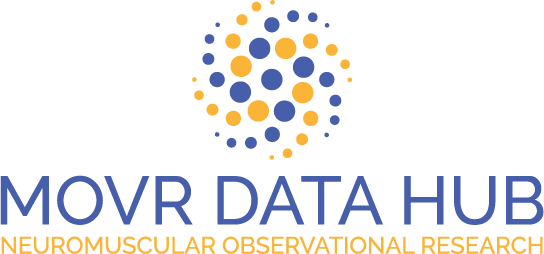Amyotrophic Lateral Sclerosis (ALS)
Research
Overview
ALS research has advanced significantly in recent years, with efforts focused on uncovering the molecular and genetic mechanisms driving both familial and sporadic forms of the disease. The Muscular Dystrophy Association (MDA) has invested over $178 million in ALS research, supporting studies ranging from basic biology to therapeutic development.
TDP‑43 pathology and cryptic splicing
A major breakthrough in ALS research is the recognition that TDP‑43 proteinopathy is present in over 95% of cases. When TDP‑43 is lost from the nucleus, it causes widespread RNA misprocessing, including the insertion of “cryptic exons,” resulting in dysfunctional proteins and progressive motor neuron degeneration. This process is now understood to be a central driver of ALS, emerging early in the disease and serving as both a biomarker and a therapeutic target.
Genetic contributions to ALS
Genetics has reshaped our understanding of ALS. C9orf72 repeat expansions and SOD1 mutations are the leading inherited causes, while additional rare genes—such as TARDBP (TDP‑43), FUS, TBK1, NEK1, OPTN, and others—contribute to familial and some sporadic cases. Even individuals without a family history may carry new or low-penetrance mutations. These discoveries have driven development of gene-targeted therapies, including antisense oligonucleotides (ASOs) that silence harmful transcripts. In April 2023, the FDA granted accelerated approval to tofersen (Qalsody), the first ASO therapy for SOD1-associated ALS, marking a milestone in precision medicine for neurodegenerative disease.
Other disease mechanisms
Beyond genetics, ALS research explores a range of cellular and molecular mechanisms thought to contribute to neurodegeneration. These include glutamate excitotoxicity, neuroinflammation, astrocyte dysfunction, oxidative stress, and mitochondrial impairment. Therapies under investigation aim to stabilize TDP‑43, correct cryptic splicing errors (such as restoring STMN2 expression), modulate immune system activity, and protect neurons from cellular stress.
Biomarker and therapy development
Biomarker discovery is rapidly advancing, with measurements of cryptic splice-derived proteins and neurofilament light chain (NfL) emerging as promising tools for early diagnosis and monitoring treatment response. Combined with evolving knowledge of TDP‑43 pathology and genetic underpinnings, these efforts are shaping a new generation of targeted, disease-modifying therapies, bringing hope for improved outcomes in both sporadic and familial ALS.
Additional reading
- Bradford D, Rodgers KE. Advancements and challenges in amyotrophic lateral sclerosis. Front Neurosci. 2024 May 22;18:1401706. doi: 10.3389/fnins.2024.1401706. PMID: 38846716; PMCID: PMC11155303.
- MDA ALS Fact Sheet
ALS Research Infrastructure
MOVR Data Hub

MDA launched a transformative platform in 2018 called the MOVR Data Hub to capture and aggregate robust clinical data from MDA’s Care Center Network. This clinical data will be married with genetic and patient-reported information to generate a hub of valuable real-world information. Through MOVR (neuroMuscular ObserVational Research), MDA will accelerate the development of new treatments and improve the health outcomes for patients with neuromuscular disease.
MOVR Data Hub ties its origins to the original MDA registry launched in 2013 and has collected clinical data from more than 3,000 patients with ALS, BMD, DMD, and SMA. The pilot phase allowed MDA to gain insights and learn best practices for a multi-disease national neuromuscular disease registry.
Last revised August 2025

